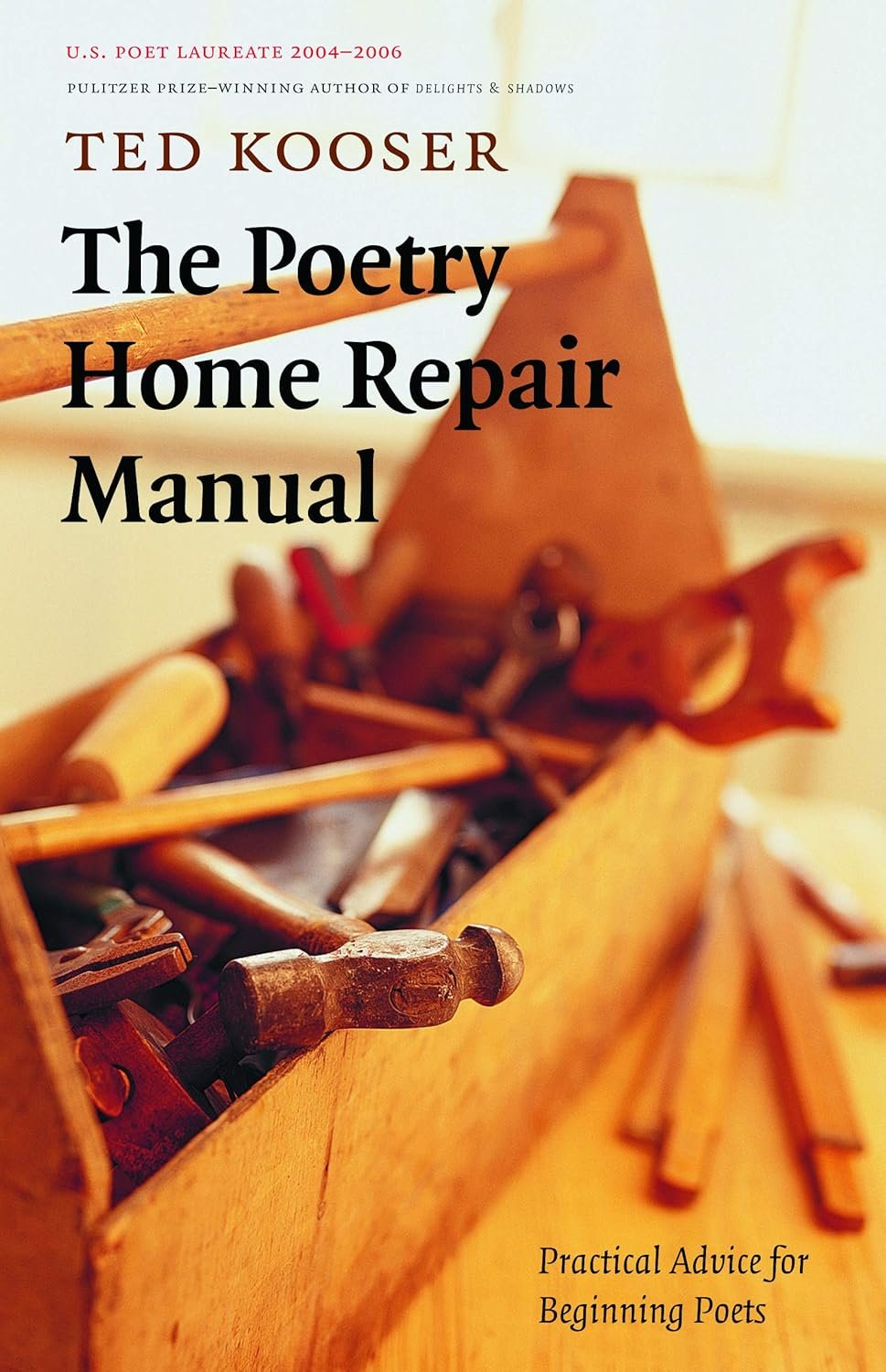
12 Sep Crafting Verses: A Guide to Repairing Your Poetic Voice
The Poetry Home Repair Manual: Practical Advice for Beginning Poets by Ted Kooser
As a lifelong lover of poetry often captivated by its haunting rhythms and delicate nuances, the title "The Poetry Home Repair Manual" by Ted Kooser intrigued me immediately. Here was a renowned poet—U.S. Poet Laureate for a reason—offering to guide us through the intricate landscape of poetic creation, much like a trusted friend armed with a toolbox filled with wisdom. I felt a mix of excitement and curiosity, wondering how Kooser, with over forty years of experience, would inspire those of us just starting to dabble in the beautiful yet perplexing art of poetry.
In its essence, this book is both a guide and a conversation—it feels inviting and intimate, like sitting across from a patient mentor. Kooser presents poetry not as a lofty, untouchable art form, but as a craft that requires attention, care, and, yes, plenty of repair work. The themes he explores revolve around the significance of connecting with readers and the importance of revising—elements that resonate deeply with any writer, regardless of experience level.
Kooser’s writing style is approachable and filled with warmth—a quality that sets the tone for the entire manual. He beautifully balances encouragement with constructive insights, guiding readers through the complex relationship between the poet and the reader. His discussions about crafting images in poetry and finding one’s voice are particularly vivid, reminding us that poetry is a living, breathing entity shaped by experiences and emotions. I found myself nodding along as he emphasized that poetry should reach out, touch, and resonate with others, not merely remain a solitary expression in the dark.
What stood out to me were his numerous examples sprinkled throughout the text, drawn from both his own works and those of modern poets alike. These excerpts spark joy and insight, making the lessons he imparts feel tangible. Phrases like “leave the light on” take on a whole new meaning when placed against the backdrop of his wisdom, inviting readers to visualize and reconsider their own writing. The way Kooser embodies each concept through examples truly brings to life the idea that poetry is, above all else, an art of connection.
One of my favorite aspects of the book is its genuine encouragement for budding poets to embrace revision. Kooser reminds us that it’s not only acceptable but essential to revise our work, offering a refreshing perspective that counters the myth of the “perfect first draft.” His insights here echoed in my mind long after I closed the book, invigorating my own writing practice.
If you’re an aspiring poet, or even someone simply curious about the craft, “The Poetry Home Repair Manual” is a treasure trove worth rummaging through. It’s like having a compassionate tutor whispering the secrets of poetic profundity into your ear; it holds the power to inspire creativity and resilience in any writer’s journey. Whether you’re looking to pen your first lines or refine your existing work, Kooser’s gentle guidance can help you unleash the transformative power of poetry.
In closing, reading this manual reminded me that poetry isn’t just about the final product—it’s about the journey, the ebbs and flows of creativity, and, most importantly, the connections we foster through words. Ted Kooser offers an invitation to engage in that journey with open arms, encouraging us to explore, repair, and ultimately, share our unique poetic voices with the world. Happy writing!
You can find The Poetry Home Repair Manual: Practical Advice for Beginning Poets here >>









